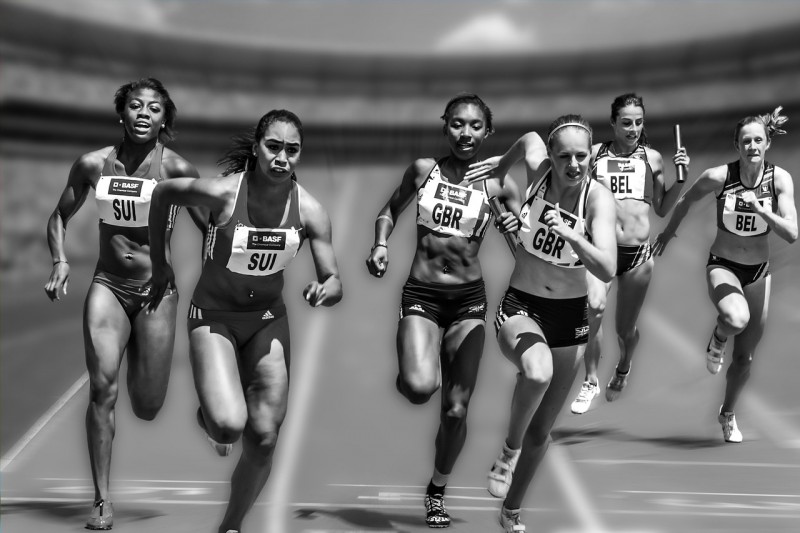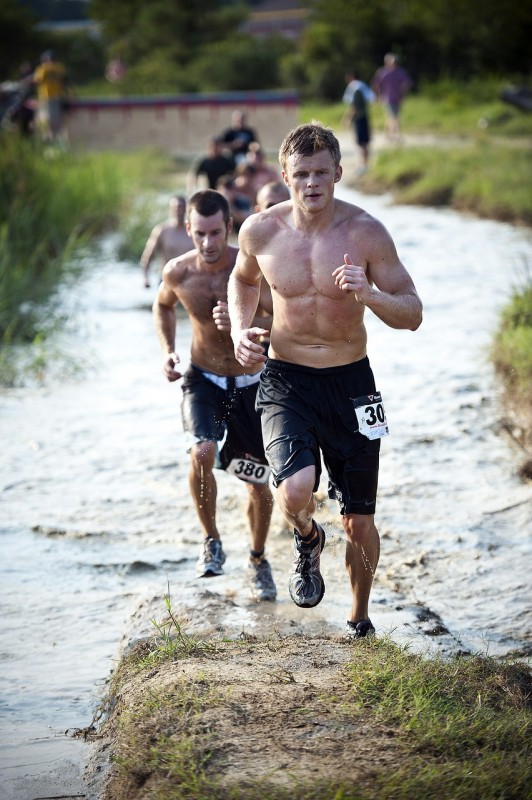
With the increase in health consciousness nationwide and an ever growing “hybrid” athlete trend, more people than ever before are hitting the dirt, pavement or treadmills for a run. Unfortunately, many of these runners are failing to capitalize on the health and performance improvements that can be achieved with some cross training through the use of weight training. Too many times, I get clients with a running background who have injuries limiting their activity and who are searching for a new avenue of fitness. Hopefully, this article will inspire trainers and athletes to take a more proactive approach to adding in resistance training to their routines.
Considerations
When referring to running athletes, I'm referring to those who generally run a mile or more. Eight hundred meters up to about one mile is considered more middle distance (although certain people may find that the mile run takes them quite some time). There are certain considerations we must take into account when developing training programs for these types of athletes. From a kinesiology standpoint, the following joint actions are responsible for propelling the athlete forward:
- Ankle—plantar flexion and dorsiflexion
- Knee—flexion and extension
- Hip—flexion and extension
- Shoulder—flexion and extension
As you can see, most of these motions occur in the frontal plan. Because these are the primary joint motions for force production, all other joint movements must be limited to allow proper force transfer. We want to limit ankle eversion and inversion, hip abduction and adduction, hip internal and external rotation, trunk rotation, lumbar flexion or hyperextension, thoracic flexion, cervical flexion or extension, cervical rotation, shoulder abduction or internal/external rotation, severe elbow extension (there needs to be some to prevent the athlete from running like a robot) and excessive wrist motion. When developing a training program, one must analyze the running mechanics of the athlete and develop a program accordingly. This means strengthening proper movement patterns while working to lessen and eliminate excessive movements that allow force dissipation and improper force transfer.
After determining the primary joint motions, we must determine the primary muscles involved in those joint motions. For the lower body, these will be the calf muscles (gastroc and soleus), anterior tibialus, quadriceps, hamstrings and glutes. For the upper body, the primary muscles involved are the pectoral muscles, anterior delts, the long head of the bicep, rear delts, traps, rhomboids and lats. There are plenty of postural muscles involved as well as the muscles involved in respiration.
For distance runners, the oxidative energy system will be the dominant energy system for providing cellular energy to the muscles. Any exercise over two minutes will draw energy primarily from this energy system and an even greater percentage as the exercise duration increases. In order to develop this system, it is important to develop your program around those same time requirements.
Once we have considered all the requirements for runners to perform their activity, we can then produce a program to target those requirements.
I will present two training sessions that should be performed separately from each other, preferably on non-running days or at least not on primary running days (longer distance, target goal days, etc).
Training Program 1
This program is time based. It involves two giant sets of exercises, which should all be done consecutively. You will do a set of A1, a set of A2, a set of A3 and so on until you've completed a set of all the A exercises. Rest between movements should only last the amount of time that it takes to get to the next exercise. Once one set of all A exercises has been completed, return to A1 to begin your second set.
As you can see, each exercise targets a specific primary movement and muscle group involved in running. There are some exercises that prevent hip adduction and internal rotation, and there are some postural exercises. I chose primarily isolation movements and movements in which one or two muscle groups could be focused on at a time. Choose a weight that will allow you to complete all the exercises in an allotted amount of time.
- 5- to 10-minute general warm up
- A1: Standing calf raises, 2 X 2 minutes
- A2: Seated band leg curls, 2 X 2 minutes
- A3: Walking lunges, 2 X 2 minutes
- A4: Seated band abductions, 2 X 2 minutes
- A5: Single arm dumbbell rows off bench, 2 X 2 minutes
- A6: Plank with glute and lat activation, 2 X 2
- B1: Anterior tib band flexions, 2 X 2 minutes
- B2: 45-degree hypers, 2 X 2 minutes
- B3: Close stance leg presses, 2 X 2 minutes
- B4: X-band walks, 2 X 2 minutes
- B5: Band pull aparts, 2 X 2 minutes
- B6: Standing sandbag front rack holds, 2 X 2 minutes
Training Program 2
This program focuses on more multi-joint movements and is rep based as opposed to time based. The first few exercises are “easy” explosive movements, so don’t try to produce max force on each rep. Instead, just try to produce a lower level of force continuously for the full 50 reps. Then you'll have a short break period before you move to the next set. Use this period to look for any break down in form, specifically the ankle collapsing, the knees falling inward or the pelvis rotating posteriorly.
If you see any of these issues, correct them or replace the movement with a corrective movement until a full 50 reps can be performed without loss of technique. The tempo movements are done to a temp of one rep every three seconds. When done for 100 reps, each exercise should last a full five minutes.
- 5- to 10-minute general warm up
- Calf hops, 2 X 50 (30-second break between sets)
- Quarter squat easy jumps, 2 X 50 (30-second break between sets)
- Quarter easy split squat jumps, 2 X 50 (30-second break between sets)
- Tempo dumbbell squats, 1 X 100 (squat every three seconds)
- Tempo dumbbell bench presses, 1 X 100 (push-up every three seconds)
- Tempo physio ball glute bridge with knee flexion, 1 X 100 (every three seconds)
- Tempo inverted rows, 1 X 100 (every three seconds)
Resistance training can be utilized by athletes of all sports. If you are an athlete or even just someone who casually enjoys a run from time to time, resistance can not only improve your performance but also lessen your likelihood of getting injured. Try utilizing the two programs above and let me know how you like them in the comments section.












1 Comment